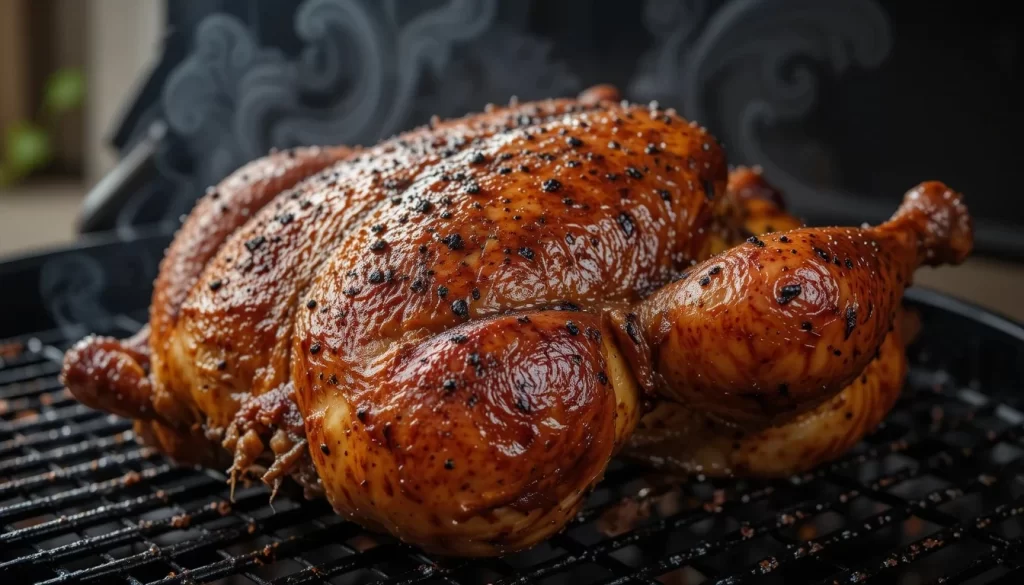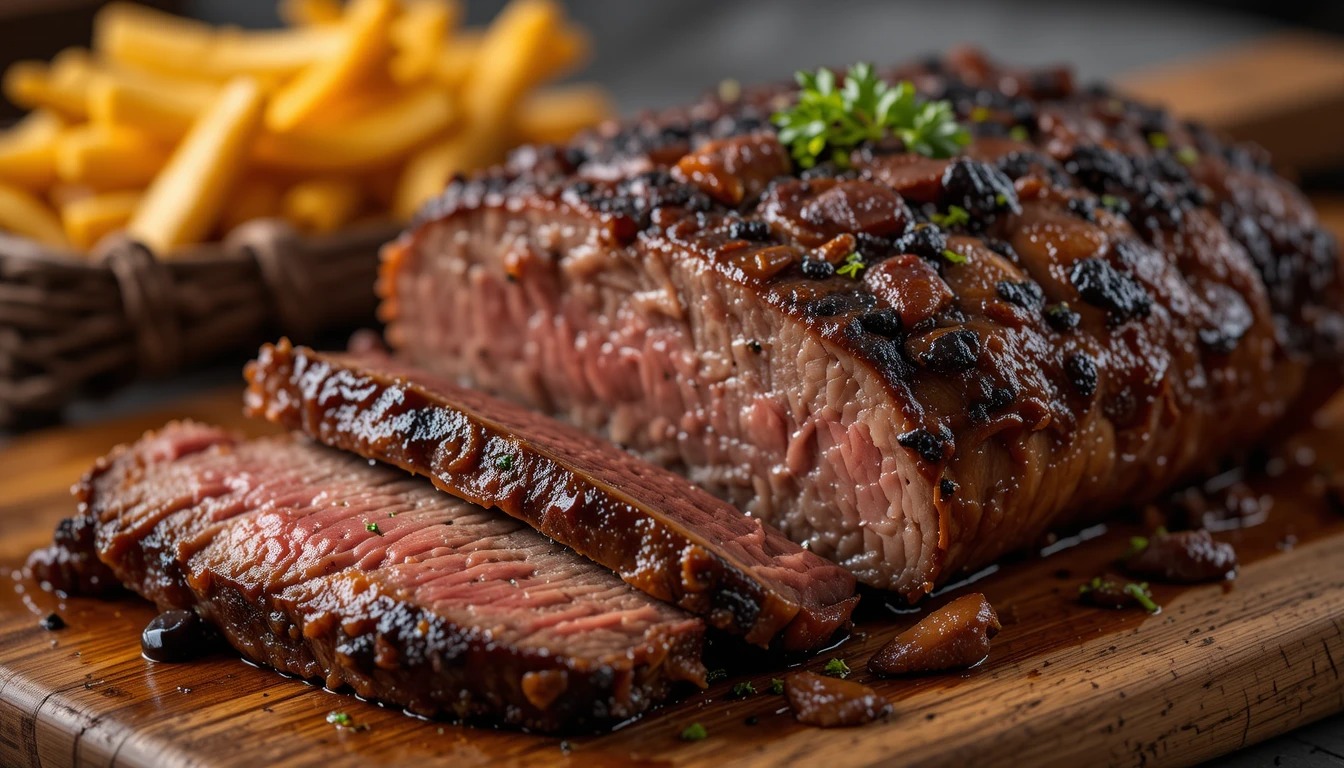Master the Art of Smoking Poultry: 10 Essential Tips for Mouthwatering Results in 2025

Did you know that smoking poultry can increase its flavor profile by up to 40%? It’s true! As a passionate barbecue enthusiast, I’ve spent years perfecting the art of smoking poultry. In 2025, the trend of home smoking is hotter than ever, and I’m excited to share my top tips with you. Whether you’re a beginner or looking to refine your technique, these smoking poultry tips will help you achieve mouthwatering results that’ll have your guests begging for seconds. Let’s dive in and unlock the secrets to perfectly smoked poultry!
Choosing and Preparing Your Poultry for Smoking
Let me tell you, when it comes to smoking poultry, the old saying “garbage in, garbage out” couldn’t be more true. I learned this the hard way when I first started experimenting with my smoker. I grabbed whatever chicken was on sale at the grocery store, threw it in the smoker, and ended up with a disappointing, dry mess. Trust me, you don’t want to make the same mistake I did.
Now, I always start by selecting high-quality, fresh poultry. It makes a world of difference in the final product. I usually go for organic, free-range birds when I can. They tend to have better flavor and texture. If you’re on a budget, just make sure you’re getting the freshest bird possible. Give it a good sniff – it shouldn’t have any funky odors.
If you’re using frozen poultry (hey, we’ve all been there), make sure you thaw it properly. Don’t try to rush it by thawing at room temperature – that’s a recipe for food poisoning. I usually transfer frozen birds to the fridge a day or two before I plan to smoke them. If you’re in a hurry, you can use the cold water method, but make sure you change the water every 30 minutes.
Once your bird is thawed, it’s time to prep it for the smoker. First things first, remove the giblets. I can’t tell you how many times I’ve forgotten this step and ended up with a surprise inside my smoked chicken. Not fun. Then, trim off any excess fat. This helps prevent flare-ups and keeps your final product from being too greasy.
Now, here’s a little trick I picked up that’s been a game-changer: spatchcocking. It sounds fancy, but it’s really just a method of butterflying the bird. You cut out the backbone and flatten it out. This helps it cook more evenly and reduces smoking time. Plus, it looks pretty impressive when you serve it. Just be careful with those kitchen shears – I may or may not have nicked myself a few times when I first started doing this.
Finally, let’s talk flavor. A good dry rub or marinade can take your smoked poultry from good to great. I like to mix up my own rubs using a blend of salt, pepper, paprika, garlic powder, and whatever other spices I’m in the mood for. If you’re going the marinade route, remember that acidic ingredients like lemon juice or vinegar can actually toughen the meat if left on too long. I usually only marinate for a few hours, tops.
Mastering the Smoking Process
Alright, now that we’ve got our bird prepped and ready, it’s time to fire up the smoker. This is where the magic happens, folks. But let me tell you, there’s definitely a learning curve. I’ve had my fair share of overcooked, undercooked, and just plain weird-tasting poultry before I got the hang of it.
First up, let’s talk wood chips. The type of wood you use can make a big difference in the final flavor of your poultry. For chicken and turkey, I usually go for fruitwoods like apple or cherry. They give a nice, mild smoky flavor that doesn’t overpower the meat. Hickory and mesquite are a bit stronger, but they can work well too if you’re careful not to overdo it. I once used way too much mesquite and ended up with chicken that tasted like a campfire. Not my finest moment.
Temperature control is crucial when smoking poultry. You want to maintain a consistent temp throughout the smoking process. I aim for around 225-250°F (107-121°C). It can be tricky to keep it steady, especially if you’re using a charcoal smoker. I’ve found that using a water pan helps stabilize the temperature and keeps the meat moist. Just remember to refill it if it starts to run low.
Now, here’s something I can’t stress enough: use a meat thermometer. Seriously, it’s a game-changer. Don’t rely on cooking times alone – there are too many variables that can affect how quickly your bird cooks. You want the internal temperature of the thickest part of the thigh to reach 165°F (74°C). I like to use a probe thermometer that I can leave in the meat while it cooks. That way, I can monitor the temperature without having to open the smoker.
Speaking of opening the smoker, try to resist the urge to peek too often. Every time you open it, you let out heat and smoke, which can extend your cooking time and affect the flavor. I know it’s tempting – I used to be a chronic lid-lifter. But trust me, your patience will be rewarded with better results.
As for smoking times, it really depends on the size of your bird and the temperature of your smoker. A whole chicken might take 3-4 hours, while a turkey could take 6-8 hours or more. But here’s where you can get creative. I’ve found that smoking for a shorter time at a higher temperature can give you a crispier skin, while a longer, lower-temperature smoke results in more tender meat. It’s all about experimenting and finding what works best for you.
Enhancing Flavor and Moisture
Now, let’s talk about taking your smoked poultry to the next level. We’re aiming for meat that’s not just flavorful, but also juicy and tender. I’ve had my fair share of dry, disappointing birds, but over the years, I’ve picked up some tricks that have really upped my game.
First up: brining. This is a step I never skip anymore. Brining involves soaking your poultry in a saltwater solution before smoking. It helps the meat retain moisture during cooking and also seasons it from the inside out. I usually do a simple brine with salt, sugar, and water, but you can get creative and add herbs or spices too. Just be careful not to brine for too long – I once left a chicken in the brine overnight and it ended up way too salty. A few hours is usually plenty.
Another technique I love is injection. This involves using a meat injector (it’s like a big syringe) to inject a flavorful liquid directly into the meat. My go-to injection mixture is a blend of melted butter, chicken broth, and herbs. It adds moisture and flavor deep into the meat. The first time I tried this, I was a bit overzealous and ended up with liquid squirting everywhere. Now I know to go slow and steady with the injector.
Remember that water pan I mentioned earlier? It’s not just for temperature control. It also helps maintain humidity in the smoker, which is crucial for keeping your poultry moist. I’ve experimented with adding herbs or citrus to the water for extra flavor, but honestly, I haven’t noticed much difference. Plain water works just fine.
Now, let’s talk about glazes and sauces. These can add a wonderful layer of flavor and help create a beautiful, glossy exterior on your smoked poultry. I like to apply a glaze during the last 30 minutes or so of smoking. Be careful, though – anything with sugar in it can burn if applied too early. I learned this the hard way when I slathered on a honey glaze at the start of smoking and ended up with a blackened, bitter mess.
Finally, don’t forget about resting your meat after it comes off the smoker. This is a step that’s often overlooked, but it’s so important. When you let the meat rest for 10-15 minutes before carving, it allows the juices to redistribute throughout the meat. If you cut into it right away, all those delicious juices will just run out onto your cutting board. Trust me, it’s worth the wait.
Smoking poultry is really an art form, and like any art, it takes practice to master. Don’t get discouraged if your first few attempts aren’t perfect. Each time you smoke, you’ll learn something new. Before you know it, you’ll be turning out birds that are so good, your friends and family will be begging you to smoke poultry for every gathering. And let me tell you, there’s nothing quite like the satisfaction of serving up a perfectly smoked bird that you’ve created yourself. Happy smoking!
Conclusion
Smoking poultry is an art that combines science, patience, and creativity. By following these essential tips, you’ll be well on your way to becoming a poultry smoking master in 2025. Remember, practice makes perfect, so don’t be afraid to experiment with different techniques and flavors. The key is to have fun and enjoy the process. Now, fire up that smoker and get ready to impress your family and friends with your newfound smoking skills. Happy smoking, and may your poultry always be juicy, flavorful, and absolutely delicious!
FAQ
- What’s the best wood for smoking poultry?
Fruit woods like apple, cherry, or peach are excellent choices for poultry, offering a mild, sweet flavor that complements the meat well. - How long does it take to smoke a whole chicken?
On average, it takes about 3-4 hours to smoke a whole chicken at 225-250°F (107-121°C), but always use a meat thermometer to ensure it reaches 165°F (74°C) internally. - Should I brine my poultry before smoking?
Yes! Brining helps keep the meat moist during the long smoking process and enhances flavor. - Can I smoke turkey the same way as chicken?
While the process is similar, turkey generally requires longer smoking times due to its size. Adjust your technique accordingly. - How do I prevent dry smoked poultry?
Brining, using a water pan in the smoker, and avoiding overcooking are key to preventing dry smoked poultry.


